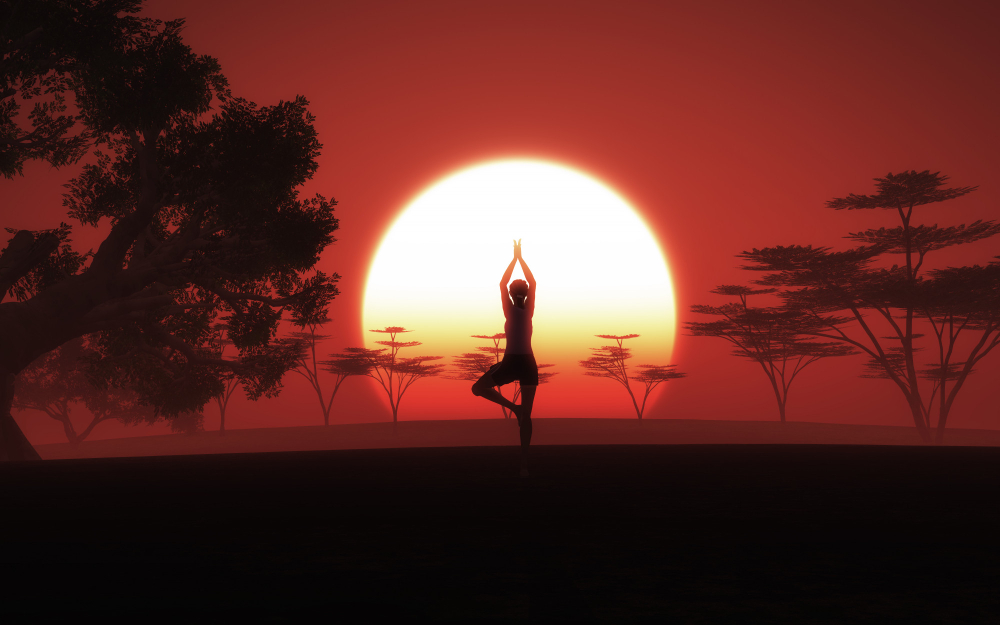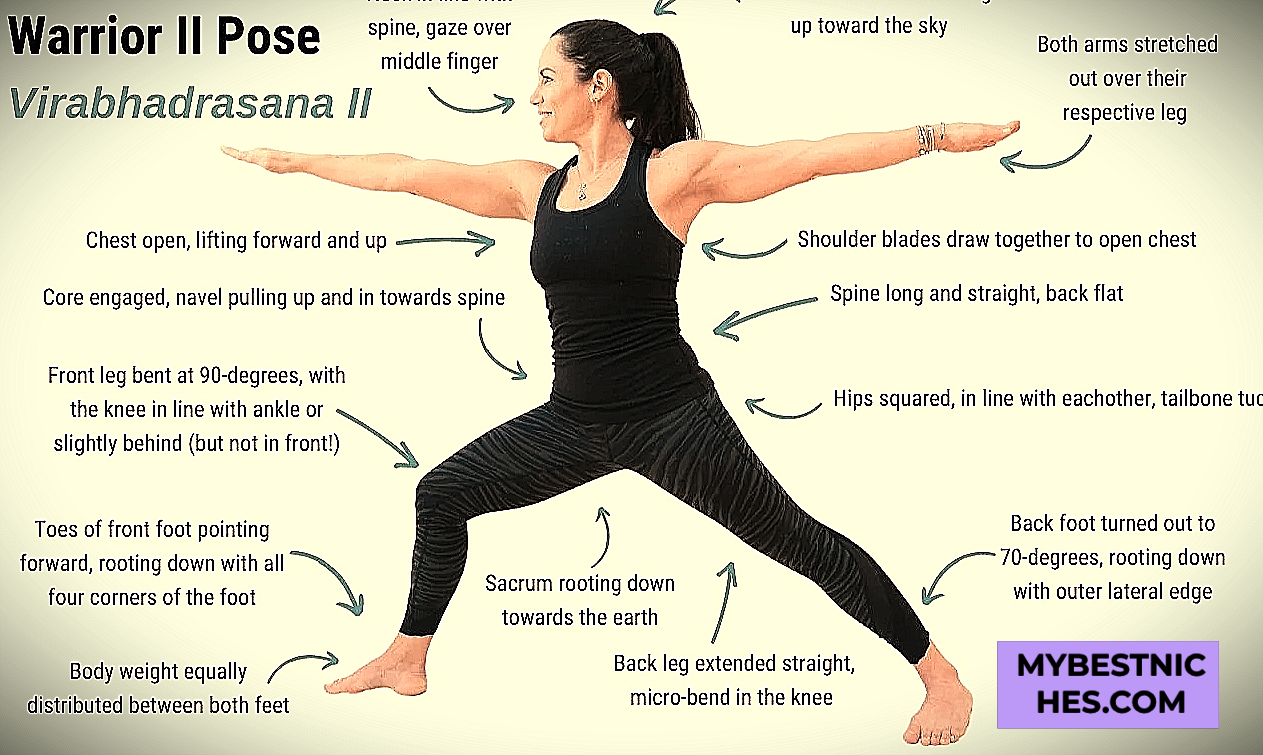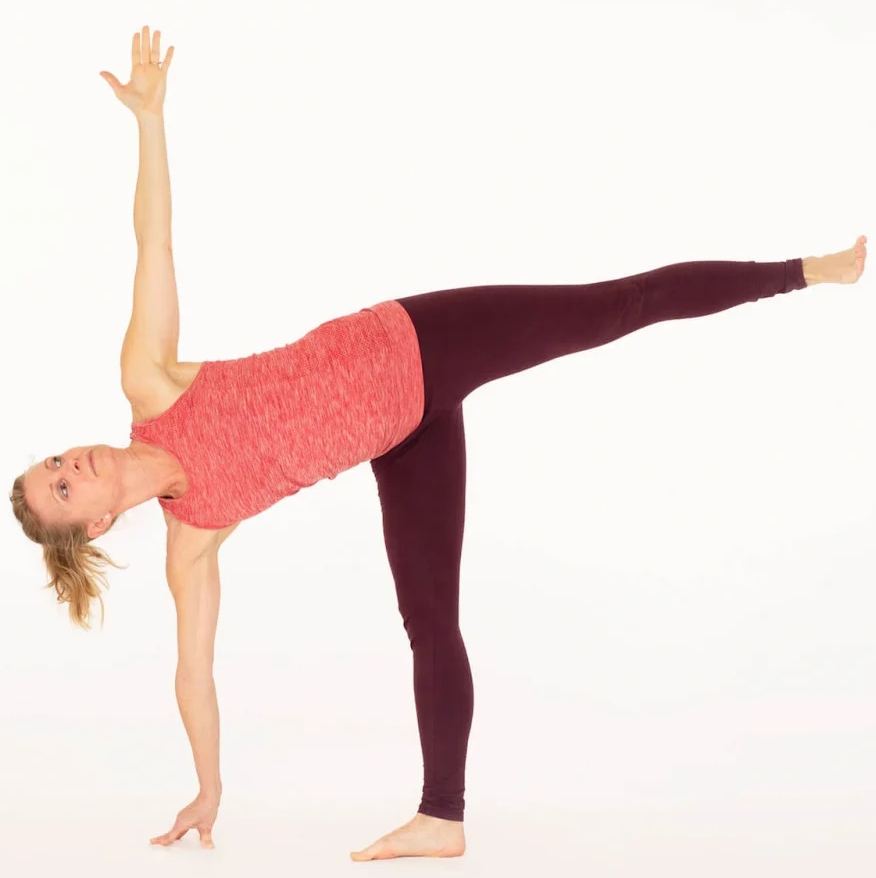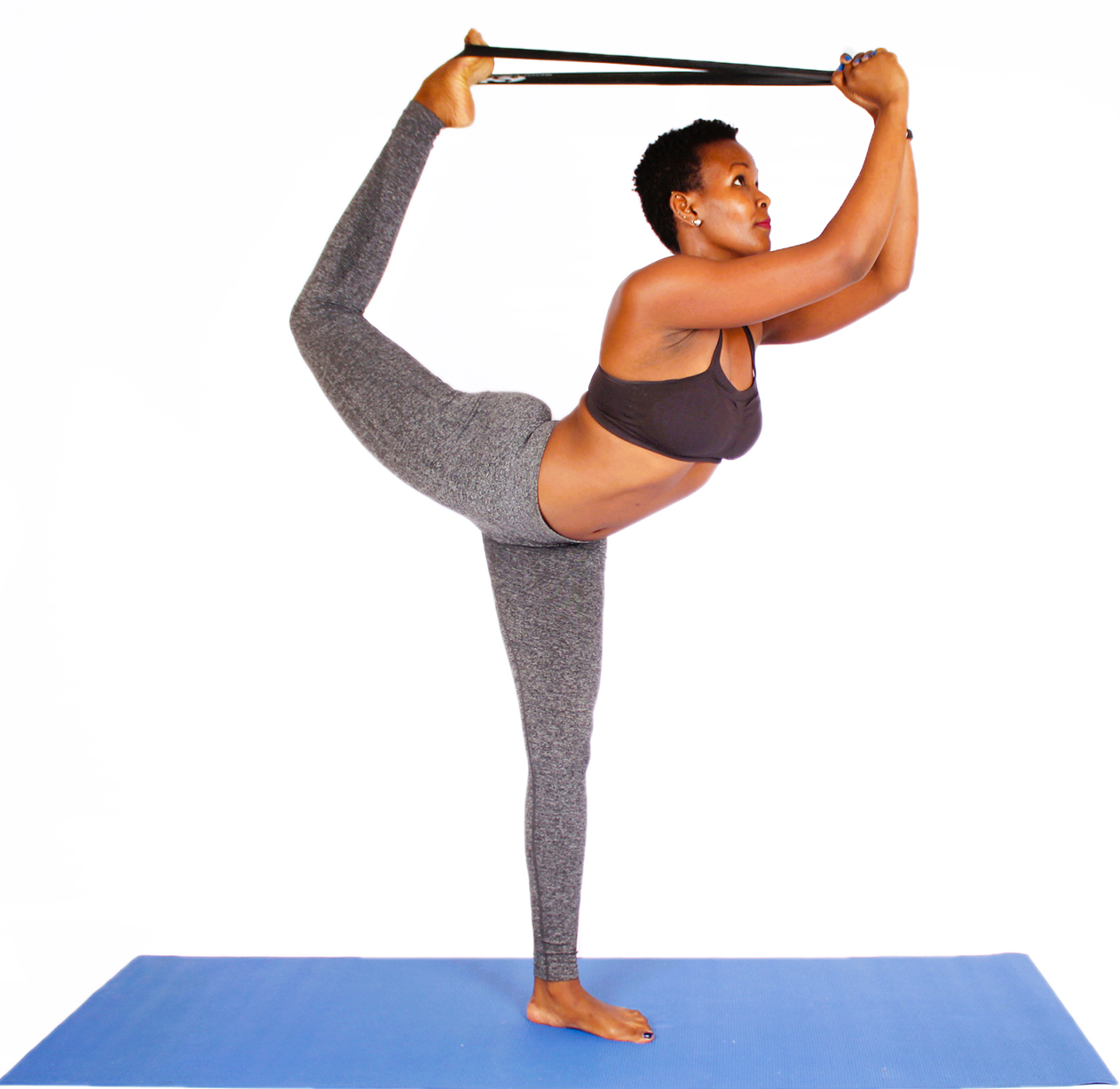Why and How to Do Nataraj Asana
Natarajasana, sometimes referred to as “Why and How to Do Nataraj Asana,” is more than just a series of stretches; it is a graceful, powerful, and poised pose. You will be able to channel your inner rhythm and embody the tremendous essence of Lord Shiva by practicing this asana, which was named after the cosmic dancer Lord Shiva. Although it is a gorgeous pose, Natarajasana has more to offer than just its aesthetic appeal. There are numerous advantages from both a physical and mental standpoint.
Meaning and Mythology of Nataraj Asana
Nataraj Asana, also known as the “Lord of the Dance Pose,” is more than simply a difficult backbend in yoga class. It’s a physical embodiment of the cosmic choreography and a portal into the rich mythology of Hinduism. Shiva, the cosmic dancer, embodies the whirling flames of creation and destruction, and to grasp its core, one must go beyond the mat.
Nataraja Shiva isn’t just a performer whose act is transitory. He’s the master of all creation, and with his forceful yet elegant movements, he dictates the cosmic cycle rhythm. Seen from every part of the cosmos, his four arms represent the four cardinal directions. As he holds the fire in his right hand and the drum in his left, he creates a rhythm that marks the passage of time and shows the way to change. Crushing Apasmara, the demon of ignorance, with his lifted right foot serves as a reminder that we must overcome our limitations to develop into enlightenment.
But the flames around him stand for more than just scenery; they are a metaphor for life’s cyclical patterns. There, driven by karma, the cycle of rebirth and death known as Samsara rotates. And yet, undeterred by its ceaseless churn, Shiva dances inside it. As the silence at the center of motion, he personifies the dichotomy of annihilation before creation.
This delicate equilibrium is reflected in his gait. As the shape shifts, one leg stoops, like a crescent moon reflecting the shape. He is solidly grounded in the everlasting truth as the other presses down on him. His body contorts in an acrobatic display of the creative and destructive forces at work in the universe. A cosmic ballet reverberates through every muscle, and every breath is a mantra spoken in perfect sync with the universe’s pulse.
Internalizing the symbolism of Nataraj Asana is more important than merely mimicking its physical shape when practicing the yoga pose. As we extend our arms toward the limitless, we recognize that our earthly form is transient. Stability in the face of change is an ever-present necessity, and we embrace this by balancing on one leg. By facing the fire with Shiva’s unfaltering grace, we can open our hearts and set our awareness ablaze.
Nataraj Asana goes beyond the yoga mat to show us that the universe is in a constant state of flux and that we are all encouraged to participate. The message is to live in the now, to be strong in our weaknesses, and to dance joyfully despite the devastation around us, because for every ending, there is a new beginning. A heavenly ballet is taking place all around you, and all you have to do is follow the pulse of your breath.
Nataraj Asana is more than simply a stretching pose; it’s an opportunity to connect with the cosmic dancer and add your unique thread to the beautiful fabric of reality. Keep this in mind the next time you’re on your mat. Join the mythology of Nataraj Asana in your quest for individual and collective enlightenment as you dance with consciousness and intention.
Benefits of Dancer Yoga Pose (Nataraj Asana)
Natarajasana, sometimes known as Dancer Pose, is an elegant and difficult yoga posture that requires stability, power, and poise. This asana, which is great for your body and soul, is named after the cosmic dancer Nataraja, who is an avatar of the Hindu deity Shiva.
Health Advantages:
- Increased Range of Motion: The hamstrings, calves, quadriceps, chest, shoulders, and spine are all stretched and lengthened in Dancer Pose. With more flexibility, you can do more with less effort and less danger of injury while going about your everyday activities.
- Power: A variety of muscle groups, including the back, legs, and core, are engaged while holding Dancer Pose. Posture, stability, and general fitness are all enhanced by the strengthening of these muscles during this isometric exercise.
- Improve your balance and coordination by strengthening your core and practicing balance on one leg in Dancer Pose. Better stability and agility in daily life can be a result of improved balance.
Psychological and Emotional Advantages:
- Dancer Pose is a great way to relieve tension since it requires you to concentrate on your breath and quiet your mind. In and out of the yoga mat, this can cause a feeling of calm and serenity.
- The graceful elegance and challenging nature of Dancer Pose can empower you and increase your confidence as you master it. Additionally, it has the potential to inspire confidence by highlighting your inherent strengths and talents.
- Mindfulness: To hold Dancer Pose, one must bring their attention inward and stay in the here and now. Your attention and mindfulness can both benefit from this inward focus, which in turn can help you be more aware and clear in your day-to-day interactions.
Advice on how to perfect the Dancer Pose:
- To prevent injury, warm up carefully before trying Dancer Pose.
- To help you maintain your balance while you’re just starting, prop yourself up against a wall or a chair.
- Keep your attention on your breath while you hold this position for as long as it takes.
- Do not overextend yourself; instead, pay attention to your body.
- Take pleasure in the journey and rejoice in any advancement, no matter how minor.
The emotional and physical advantages of Dancer Pose make it a worthwhile yoga practice. The poise, power, and serenity contained in this lovely asana can be yours with commitment and practice.
Contraindications and Precautions for Dancer Yoga Pose
The Sanskrit name for the dancer pose is Natarajasana, and it is a powerful and graceful posture. But its complex dance moves make it command attention, just like a mesmerizing ballerina. One must be well-versed in its dangers and contraindications before aiming for its elegant balance. Hold on tight, fellow yogis, for we’re about to explore the depths of this seductive asana in terms of safety.
Getting Around the Real World:
Surgery and Injuries: Warning signs include a history of or current injury to the lower back, ankles, knees, shoulders, or hamstrings. Dancer Pose’s complex requirements shouldn’t impede tissue healing. Similarly, it is important to be more careful when recovering from surgery so as not to interfere with the healing process.
Worries about the Joints: Osteoarthritis, osteoporosis, and herniated discs are already fragile conditions, and the compression and extension of Dancer Pose could make them worse. Take note of how you feel, and give priority to changes or substitutes.
Stability and Power: Recognize your strengths and weaknesses. It is recommended that beginners and anyone with weak muscles, such as elderly people, proceed with caution when attempting Dancer Pose. To do it safely, you need to have a solid grasp of balancing positions and a strong core.
Clutches within:
Heart and Vascular System: Stop what you’re doing if you have any of these symptoms: high blood pressure, heart problems, vertigo, dizziness, or headaches. The deep backbend and balancing act might damage the cardiovascular system and cause nervous system abnormalities.
Mental Health: The difficult nature of the stance and the dread of falling can amplify anxiety and sadness. Instead, focus on positions that promote a sense of tranquility and stability.
Due to the strain on the abdomen, pregnant women should avoid Dancer Pose during their menstrual cycle and the second and third trimesters in particular. If you suffer from period cramps or discomfort, it is recommended that you make some adjustments when you are menstruating.
Putting Contradictions to Rest:
There are no boundaries when it comes to this mantra: listen to your body. When you feel pain, it’s a red flag. If you encounter any pain, make adjustments, utilize aids, or pause for a moment. Keep in mind that the point of yoga is not to compete in a series of poses but rather to discover oneself.
Ask for Help: A trained yoga instructor can evaluate your abilities and limits and suggest adjustments or different positions to accommodate them. You may trust their knowledge to guide you as you dance within your limits.
Although Dancer Pose beckons with its allure, you must honor the pose’s complexities. The journey can be just as transforming as the pose if approached with mindfulness, caution, and a willingness to change.
Preparing for Dancer Yoga Pose (Nataraj Asana)
Natarajasana, also known as Dancer Pose, is an elegant and difficult yoga posture that requires strength, flexibility, and balance. The Hindu god of dancing, Nataraja, is often shown in a dynamic stance similar to this asana, which is why it is named after him.
It requires practice and planning to reach the full Dancer Pose. To help you get started, here are the main steps:
1. Preparation: To get your muscles and joints ready, start with light motions. A few excellent choices are the sun salutation, the arm circle, and the leg swing.
Sunrise Yoga Pose:

Relax your shoulders, hips, and chest: To ensure a safe and deep descent into the Dancer’s posture, pay special attention to these regions before you get into the posture.
Mountain Pose (Tadasana)

Establish a strong foundation in Mountain Pose: Keep your hips wide, stand tall, and straighten your back by pressing down with your heels. Pull your shoulder blades down to your back and engage your core.
Mountain Pose (Tadasana)

Press your heel down toward the mat while keeping your back knee straight. Make sure your abs are engaged and your hips are squared to the front.
Hold Warrior II for a few breaths to warm up your legs and glutes: Your stability in Dancer Pose will be enhanced with this.
4. Half-Moon Pose (Ardha Chandrasana):

From Warrior II, reach your arms overhead and hinge forward from your hips: Always keep a strong standing leg and firmly push down with your heel.
Gaze down at your standing foot or out in front of you: Breathe out and in while you hold, allowing your back and hamstrings to relax.
5. Tree Pose (Vrksasana) and Eagle Pose (Garudasana):

Work on your balance with poses like Tree Pose (Vrksasana) and Eagle Pose (Garudasana): You may use them to strengthen your core and go into Dancer Pose.
TIPS:
Use a strap or block if you can’t reach your foot: There is a possibility that you might reduce the chance of hamstring strain by maintaining your body in the appropriate posture.
Focus on your breath: While you are holding the posture, be sure to breathe deeply and evenly so that you can keep your mind in a stable and present condition.
Listen to your body: You must restrain yourself from putting undue stress on yourself if you are just beginning to work in this capacity. It is time to extricate yourself from the pose if you feel any kind of pain.
READ MORE:




Pingback: Kale provides Nutrient-Rich Wellness